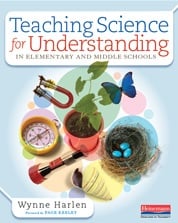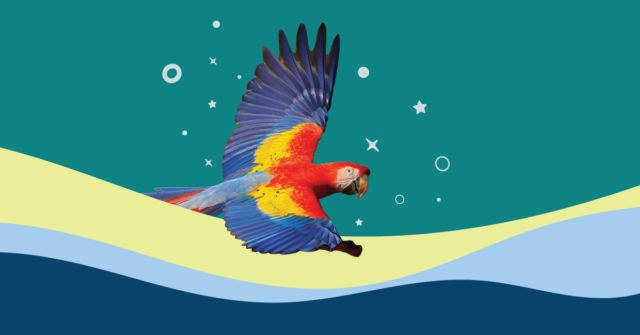
Wynne Harlen’s new book, Teaching Science for Understanding in Elementary and Middle Schools, is focused on why developing understanding is essential in science education and how best to engage students in activities that deepen their curiosity about the world and promote enjoyment of science. In today’s blog, which is adapted from the book, Wynne talks about how taking your students’ ideas seriously will help them expand their scientific understanding.
A teacher brings some soil samples to class and begins the lesson: “Tell me what you know about soil. Anything at all.” Answers come quickly:
“It’s mud.”
“It’s got stones.”
“It’s food for worms.”
“Plants need it to grow.”
Here were several different ideas, each of which could be investigated, but the teacher had prepared a lesson with a different focus: where soil comes from. So the students’ ideas were set aside with only minimal acknowledgment. This often happens when teachers try to involve students in the topic but then, having exposed students’ ideas, effectively ignore them. Of course the teacher could not abandon the planned lesson and use the students’ ideas immediately. What she could do instead is to make a list of the students’ ideas, display it in the classroom as a way of acknowledging the value of the students’ ideas, and then use the list in planning the further activities on the topic.
There are several theoretical reasons we should start from students’ initial ideas rather than just telling them what we want them to know, but there is also a very practical reason: if we ignore students’ ideas or insist they memorize the correct ones, they will continue to hold on to their own ideas when trying to make sense of things around them.
Perhaps the strongest reason for taking students’ ideas seriously comes from looking at what they are. This shows that they are the product of thinking about (necessarily limited) experience, not childish fantasy. Their ideas at a given stage of development depend on both the extent of children’s experience and their reasoning about it. We therefore need to consider not only what the ideas are but how the students arrived at them. It may be insufficient evidence (assuming all wood floats because they have never seen wood that does not float) or faulty reasoning that ignores available evidence (assuming things that sink are heavier than things that float). Students have reasons for what they think, and unless they are shown better reasons for thinking differently and more scientifically, they will retain their own ideas.
If we are to take students' ideas seriously, we need to know what they are.
We’ve known for a long time, mainly through Piaget’s research in the first part of the twentieth century, that young children are not only eager to interact with the things in their environment but also develop ideas about the world around them as a result. Researchers have found that children in very different parts of the world develop remarkably similar ideas, ideas often in conflict with the scientific understanding of events and relationships.
If we are to take students’ ideas seriously, we need to know what they are. This means setting up situations that invite students to express their views in a way that reveals what they are thinking. Some useful strategies are:
- questioning in a way that invites students’ ideas
- asking for writing or drawings that express what students think
- having students create concept maps
- initiating debate with concept cartoons
- listening to students and discussing with them the words they use.
For any of these strategies to be effective, the classroom has to be one in which the students feel free to express their own ideas and ways of thinking without fearing they will give “wrong” answers.
The aim is to help students realize that there are ideas different from theirs and that all ideas—their own and those of others—are worthwhile only if there is supporting evidence. In many cases the response requires the introduction of alternative ideas. Students should not be left with their own everyday way of thinking when they could be trying out ideas that expand their understanding.
♦ ♦ ♦ ♦
 Click here to discover more about Teaching Science for Understanding and to read a sample from the book.
Click here to discover more about Teaching Science for Understanding and to read a sample from the book.
Wynne Harlen has spent a lifetime as a teacher, researcher, and author in science education. She is now a Visiting Professor at the University of Bristol and a consultant to various science projects in the US and UK.


